
Climate change is occurring faster in high-latitude regions due to polar amplification, the phenomenon that any change in the net radiation balance tends to produce larger change in temperature near the poles than the planetary average. The result is a self-reinforcing feedback loop that spurs further warming of the climate. For example:
- Sea ice reflects the sun’s rays back into space, reflecting more heat than it absorbs, which helps keep the planet cool. But, as sea ice decreases, there is more open ocean that absorbs more heat from the sun, and as the ocean absorbs more heat, less heat is reflected so more heat stays on Earth, and more ice melts.
- Likewise, snow-covered ground reflects more heat than ground covered by vegetation. As temperatures rise, more trees and shrubs colonize Arctic ground, absorb more heat, and increase the effects of warming in the soils.
- Permafrost, soil that remains frozen year-round, is thawing as the Earth warms. Permafrost stores a lot of carbon; as it thaws, it releases greenhouse gases into the atmosphere (including carbon dioxide and methane), which then contributes to more warming.
Human-caused climate change affects all 400+ parks of the National Park System. Effects vary depending on the park and can be unpredictable. In some cases, we are still learning about the extent of climate change effects. In Alaska parks, we see a wide range of impacts. The National Park Service measures and monitors these changes so that park managers can make good decisions.
-
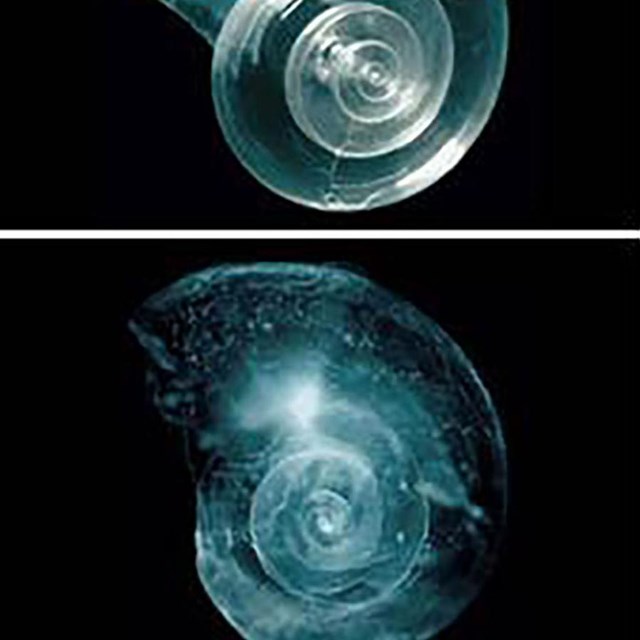 Ocean Acidification
Ocean AcidificationOcean acidification is a major threat to shellfish. It is exacerbated by freshwater inputs from melting glaciers and the regions cold water.
-
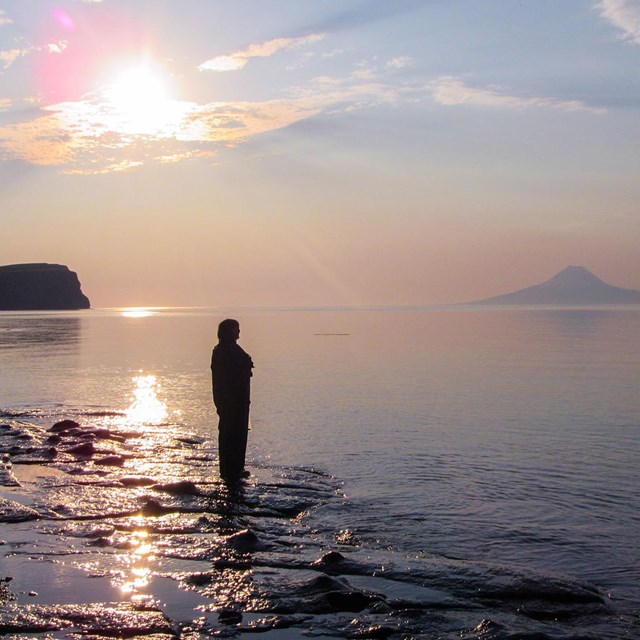 Marine Heatwaves
Marine HeatwavesMarine heatwaves are becoming more common and more extreme. We're still learning about their many impacts on ocean ecosystems.
-
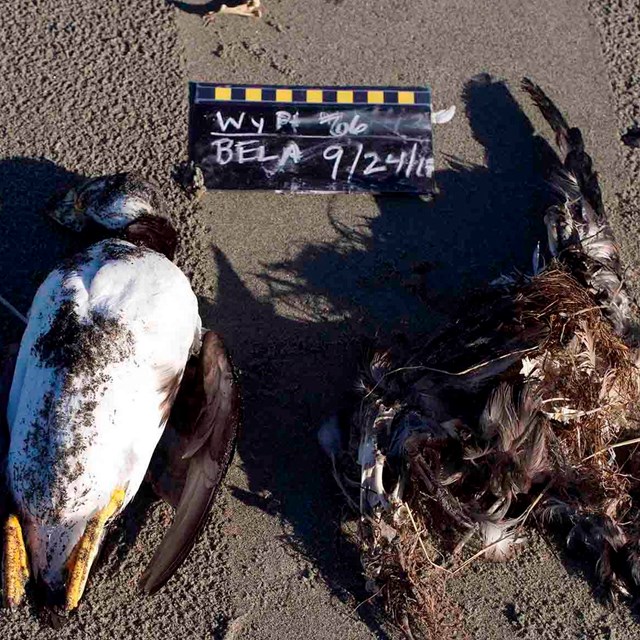 Sebird Die-Offs
Sebird Die-OffsWarm oceans create disruptions in the food web that have led to massive seabird die-offs.
-
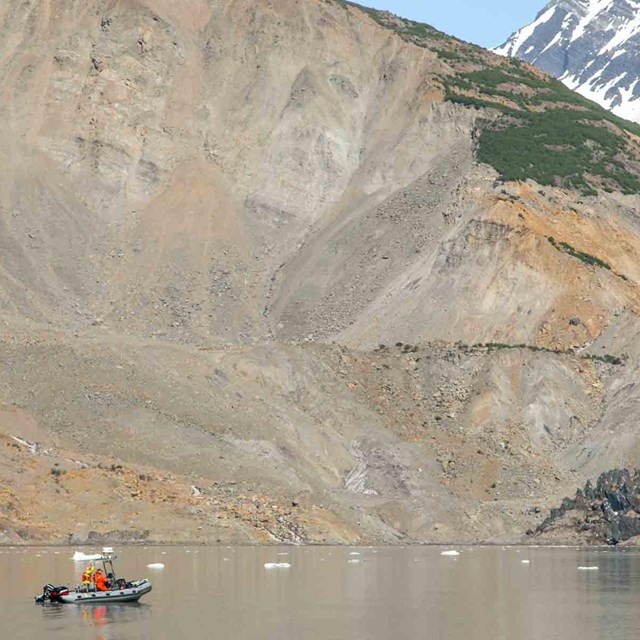 Geohazards
GeohazardsGeohazards are an increasing threat due to thawing and unstable soils.
-
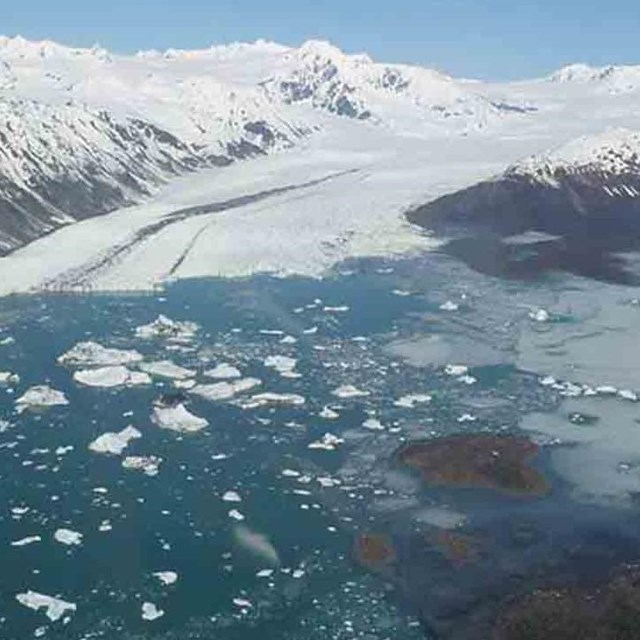 Glaciers
GlaciersMelting glaciers contribute to sea level rise, ocean acidification, and hydrological and landscape changes.
-
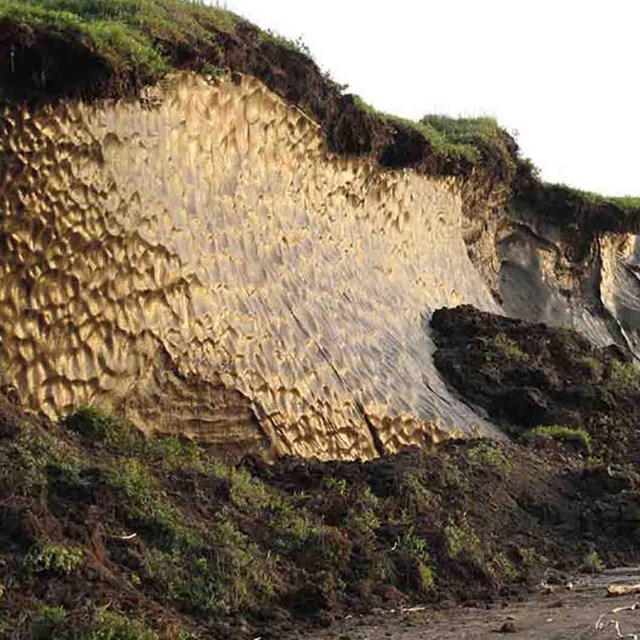 Permafrost
PermafrostThawing permafrost releases greenhouse gases like carbon dioxide and methane, which contributes to more warming.
Climate Change and its Impacts on Alaska National Parks
- Offices: Arctic Inventory & Monitoring Network, Central Alaska Inventory & Monitoring Network

Read the abstract and get the link to an article published in Environmental Research Letters that connects vegetation shift to warming Arctic and Boreal soils under vegetation. Kropp, H., M. M. Loranty, S. M. Natali, A. L. Kholodov, A. V. Rocha, … J. A. O’Donnell … et al. 2020. Shallow soils are warmer under trees and tall shrubs across Arctic and Boreal ecosystems. Environmental Research Letters.
- Offices: Arctic Inventory & Monitoring Network, Central Alaska Inventory & Monitoring Network

Read the abstract and link to a paper that describes increasing temperatures and their effects on permafrost in northern parks: Swanson, D. K., P. J. Sousanes, and K. Hill. 2021. Increased mean annual temperatures in 2014-2019 indicate permafrost thaw in Alaskan national parks. Arctic, Antarctic, and Alpine Research 53(1): 1-19.
- Arctic Inventory & Monitoring Network
The role of old carbon in aquatic food webs
- Offices: Arctic Inventory & Monitoring Network

Read a summary and get the link to this article that looks at the use of old carbon in Arctic fish food webs and potential impacts of climate change: Stanek, A.E., Carey, M.P., O'Donnell, J.A., Laske, S.M., Xu, X., Dunton, K.H., von Biela, V.R. 2024. Arctic fishes reveal a gradient in radiocarbon content and use. Limnology and Oceanography Letters.

The Arctic continues to warm at a faster rate than the global average. The 2024 Arctic Report Card highlights record-breaking and near-record-breaking observations that demonstrate dramatic change, including Arctic tundra transformation from carbon sink to carbon source, declines of previously large inland caribou herds, and increasing winter precipitation.
- Wrangell - St Elias National Park & Preserve
Community-led food security solutions in Alaska’s Copper River Valley
- Locations: Glacier National Park
- Offices: Crown of the Continent Research Learning Center

Buried in Glacier's melting ice are archeological and paleontological materials encased hundreds, or even thousands of years ago. A recent five-year collaborative research project investigated 46 ice patches in the park, taking core samples, documenting melting, and collecting remains of ancient plants and animals, including bison.
- Denali National Park & Preserve
Ice Patch Archeology

The National Park Service will harness existing data and products to develop specific, park/landscape-based fire-climate tools that will provide valuable insights for park fire managers. These tools and products will examine future projections for fire risk, hazard, and/or severity, to help guide fire managers in planning and decision-making.
- Locations: Katmai National Park & Preserve, Lake Clark National Park & Preserve
- Offices: Southwest Alaska Inventory & Monitoring Network
- Locations: Aniakchak National Monument & Preserve, Bering Land Bridge National Preserve, Cape Krusenstern National Monument, Denali National Park & Preserve, Gates Of The Arctic National Park & Preserve, more »
- Offices: Natural Resource Stewardship and Science Directorate

The rugged beauty of Alaska has been the homelands of Alaska Native people for thousands of generations. Today the relentless march of climate change threatens a range of cultural resources from archeological sites to historic cemeteries. Now the National Park Service is in a race to document heritage across the parklands in Alaska.
Last updated: July 13, 2023



